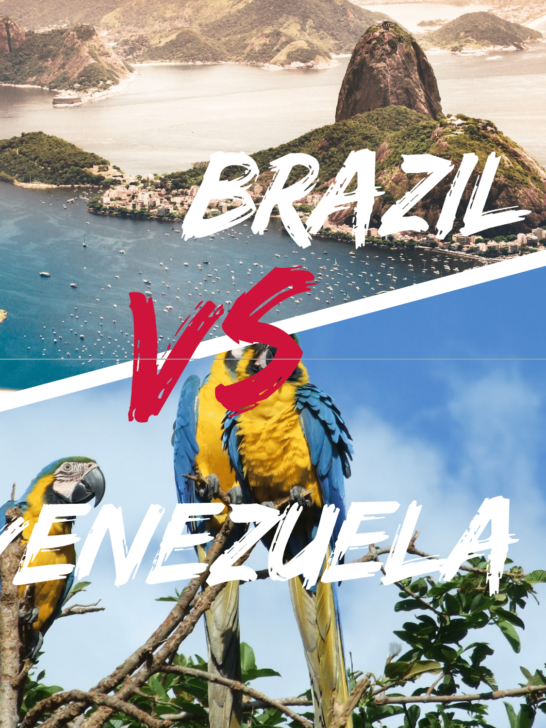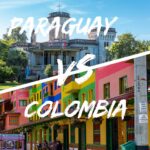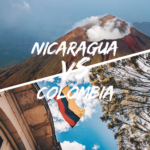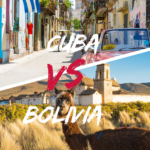Brazil vs Venezuela: The ultimate Comparison
Brazil and Venezuela are two neighbouring countries in South America with rich and diverse cultures, landscapes and histories. Both countries share some similarities, such as being former colonies of European powers, having large populations of mixed ethnicity, and being members of regional organisations such as Mercosur and Unasur. However, they also have significant differences, such as their political and economic systems, their natural resources and environmental challenges, and their relations with other countries and regions. So let’s dive into the ultimate travel comparison: Brazil vs Venezuela!
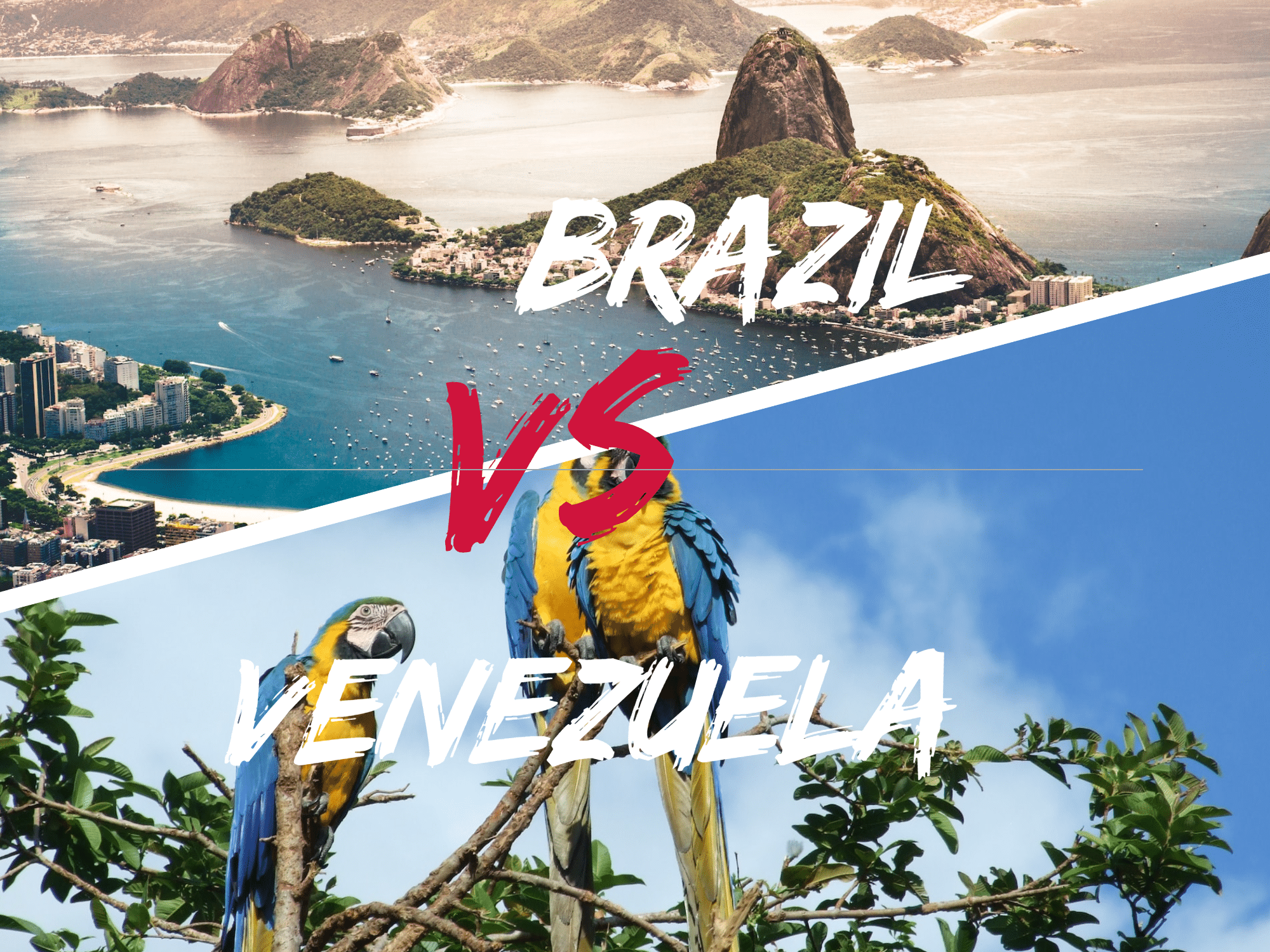
In this article, we will compare and contrast Brazil and Venezuela in terms of geography, demography, culture, politics, economy and foreign policy. We will also explore the opportunities and challenges facing these two countries in the 21st century, and how they can cooperate or compete with each other and with the rest of the world.
Top Things to Do in Brazil vs Venezuela
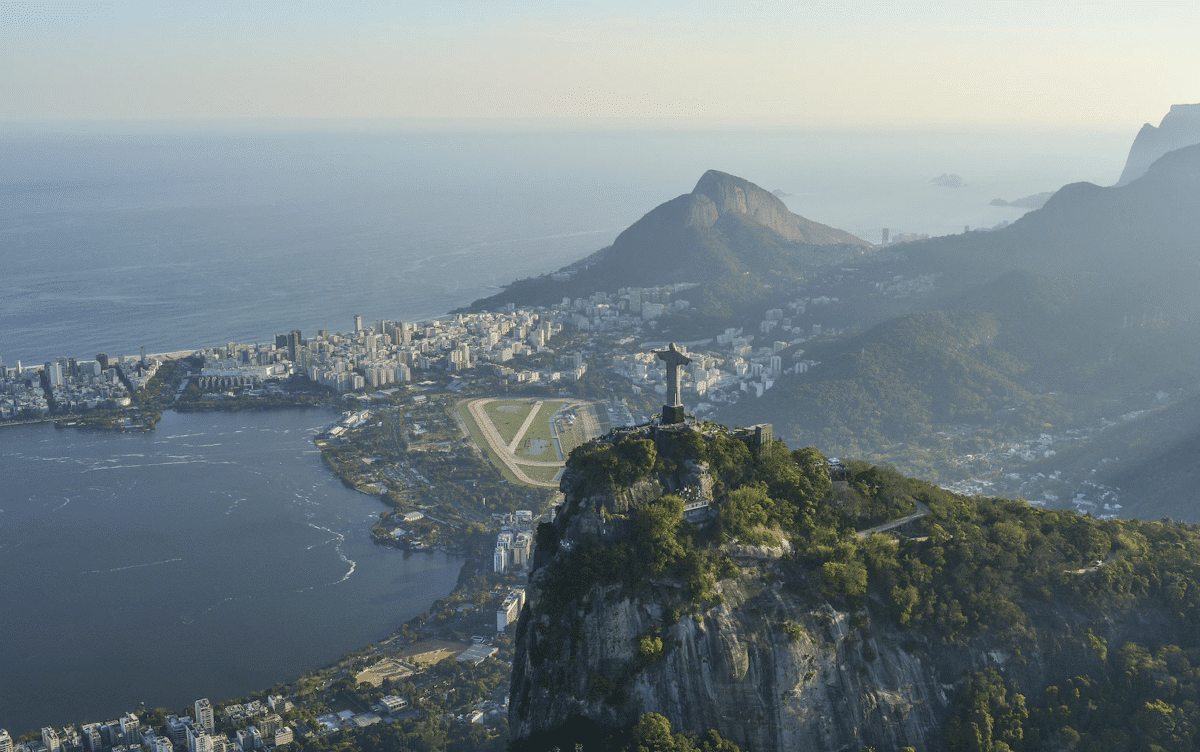
Brazil and Venezuela offer tourists a variety of interesting destinations, activities, and attractions. Both countries are known for their impressive natural beauty and biodiversity, and for their unique cultural and historical sites.
In Brazil, visitors can explore the lush Amazon rainforest, the stunning Iguazu Falls, and the iconic Christ the Redeemer statue. The colorful cities of Brazil, such as Rio de Janeiro and Salvador, boast of vibrant nightlife, art, and music. The beaches of Copacabana and Ipanema are popular destinations, while the nearby hills and mountains offer a variety of activities, such as hiking, river rafting, beach buggy rides, and diving.
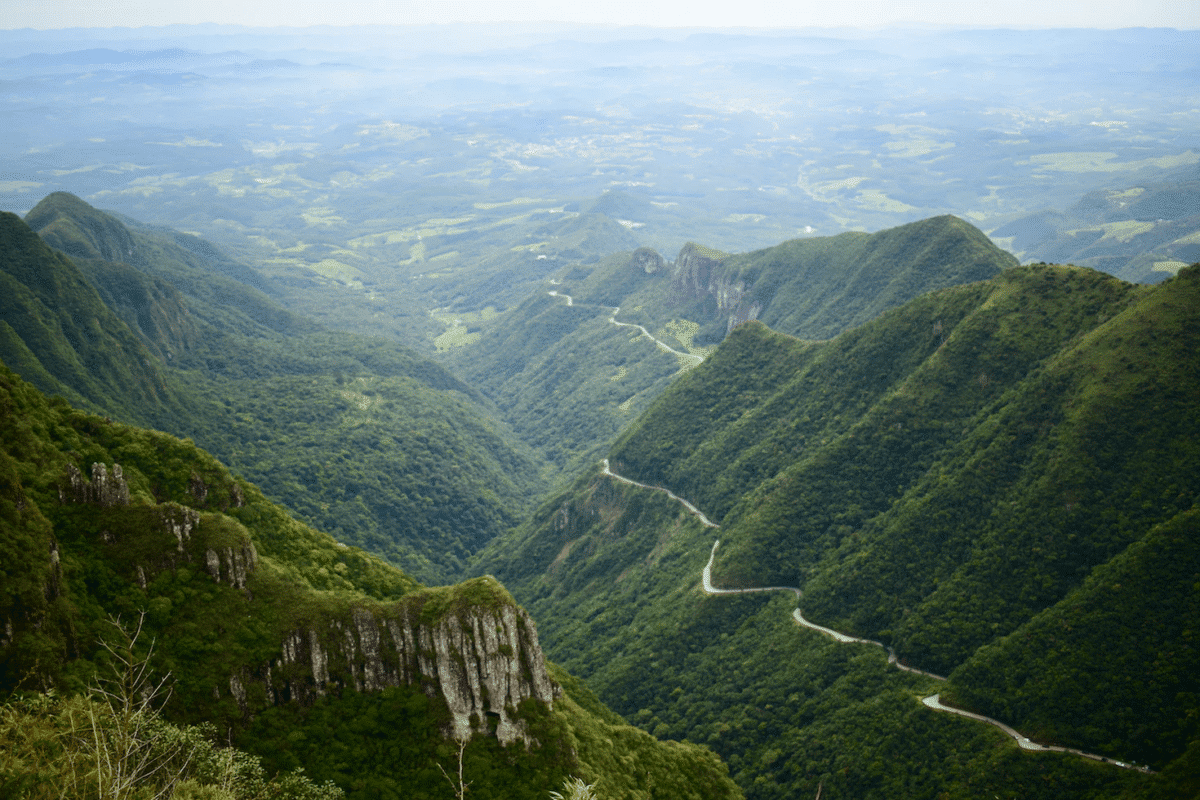
Venezuela is home to many natural wonders, including the snowcapped Andean peaks, white-sand Caribbean beaches, and the tallest waterfall on the planet, Angel Falls. Venezuela’s 43 national parks and numerous other protected areas offer nature lovers, bird-watchers, and adventure travelers a variety of activities, such as fishing for piranha, wrangling anacondas, and hiking to the foot of Angel Falls. In addition, visitors can explore the modern metropolis of Caracas, the university city of Mérida, and the magical natural phenomenon of lightning at Lake Maracaibo.
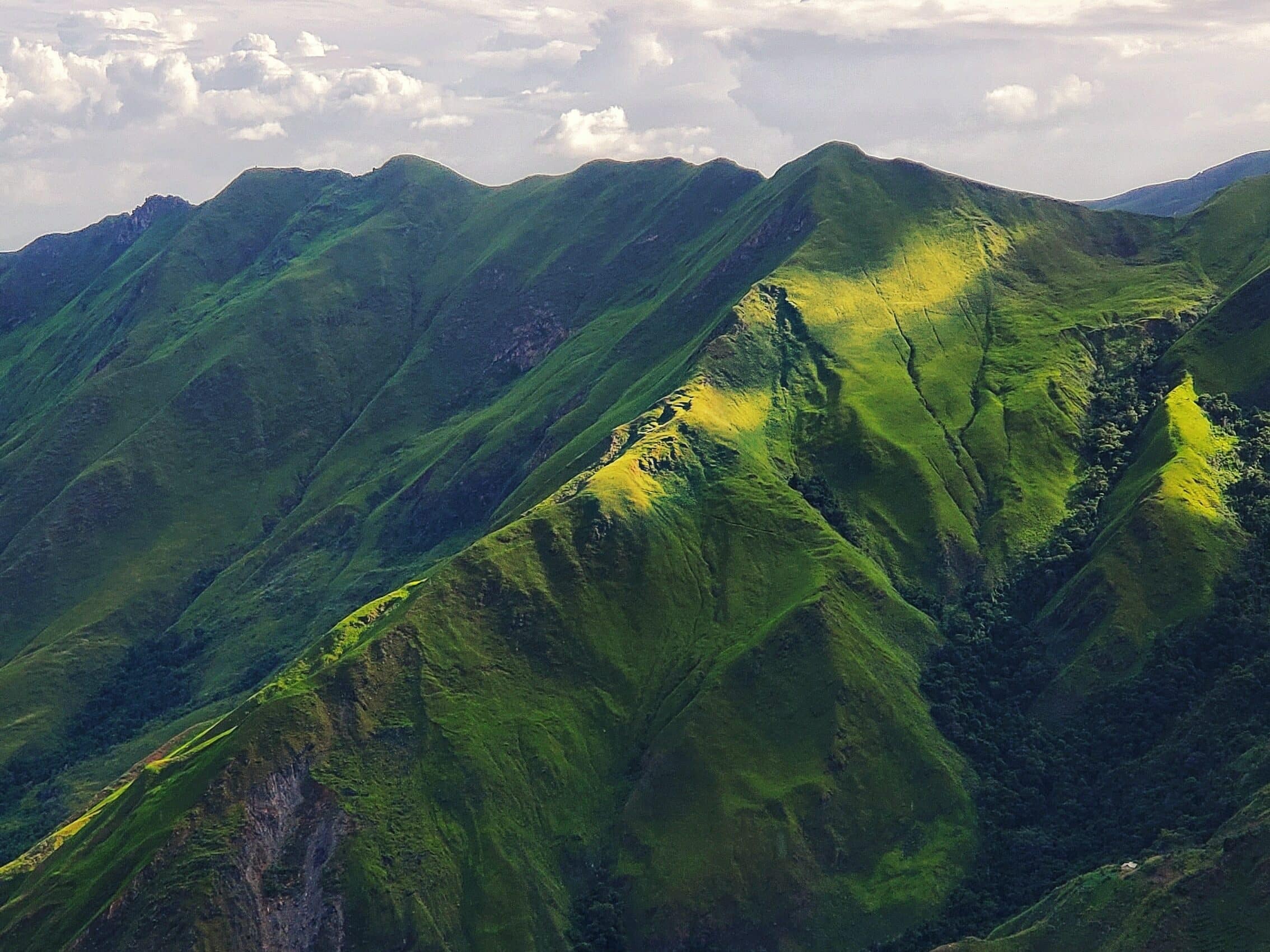
Despite their many differences, Brazil and Venezuela have one major similarity: they both have an abundance of natural beauty. From the Amazon rainforest in Brazil to the mountains of Mérida in Venezuela, these countries have something for everyone. Both countries are also home to vibrant cultures, offering travelers an opportunity to experience their customs and traditions.
Conclusion
Overall, Brazil and Venezuela are great destinations for tourists who are looking to experience the beauty of nature, explore vibrant cities and towns, and take part in a variety of activities and attractions.

Both countries offer an abundance of natural beauty and vibrant cultures for tourists to experience customs and traditions
| Category | Brazil | Venezuela |
| Natural Attractions | Amazon rainforest, Iguazu Falls, beaches of Copacabana and Ipanema, hills and mountains for hiking, rafting, buggy rides, and diving | Andean peaks, Caribbean beaches, Angel Falls, 43 national parks, protected areas for fishing, bird-watching, and hiking |
| Cultural and Historical Sites | Christ the Redeemer statue, Rio de Janeiro and Salvador cities with vibrant nightlife, art, and music | Caracas modern metropolis, Mérida university city, lightning at Lake Maracaibo |
Food and Drinks
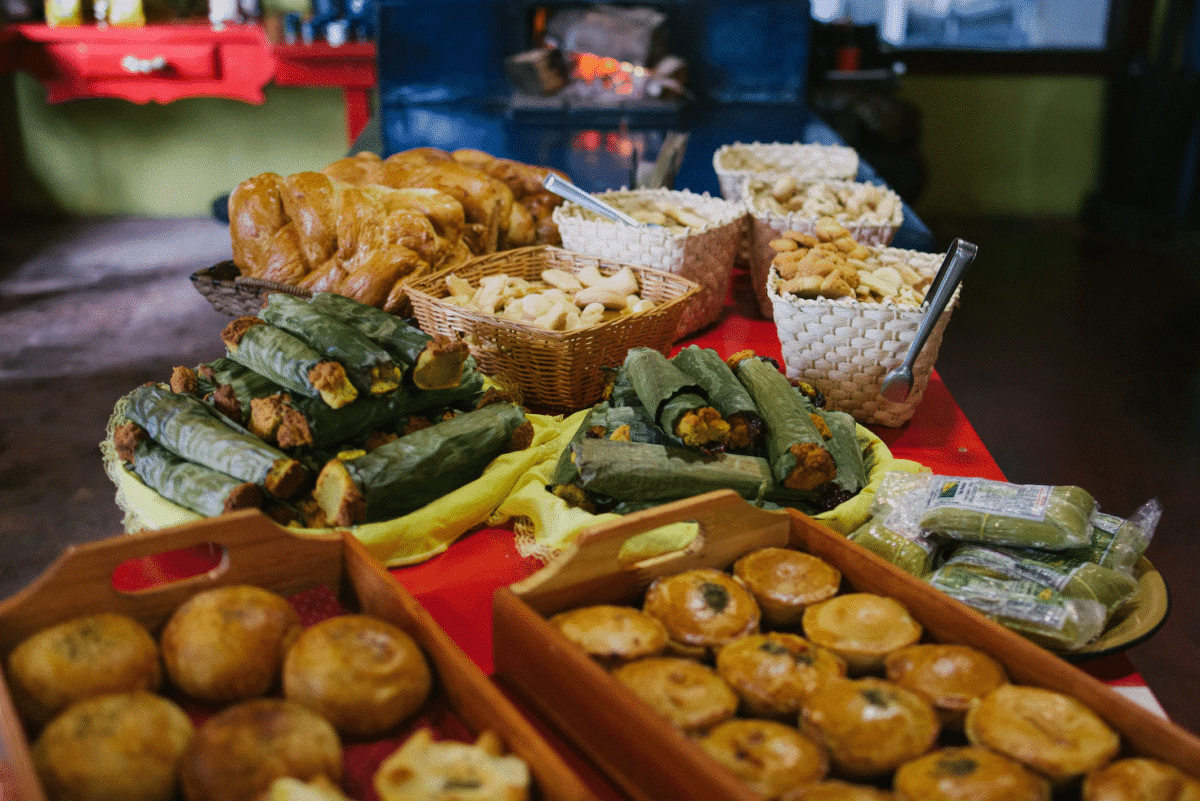
In comparing the foods and drinks of Brazil and Venezuela, we can see that there are many similarities and a few differences. Both countries have cuisines that are influenced by their respective climates and cultures. Both countries rely heavily on fresh meat and fish and make use of root vegetables and tropical fruits in their dishes.
Brazil
In Brazil, popular dishes include feijoada, a stew of black beans, beef, and pork, and moqueca, a fish or seafood stew. Also popular are pão de queijo (cheese bread), farofa (toasted cassava meal), and cachaça (a distilled alcoholic beverage made from sugarcane).
Other popular dishes include moqueca (fish or seafood stew), vatapá (shrimps and chicken in a creamy sauce), and bolinhos de bacalhau (cod fishcakes). Por kilo restaurants, where customers pay by the weight of their laden plates, are a popular and affordable option. The national drink is the caipirinha, a cocktail made with cachaça, lime, and sugar. Brazil also produces excellent wines and beers, such as Polar beer.
The national dish is feijoada. The cuisine in Brazil is heavily influenced by European, African, and Middle Eastern cultures.
Venezuela
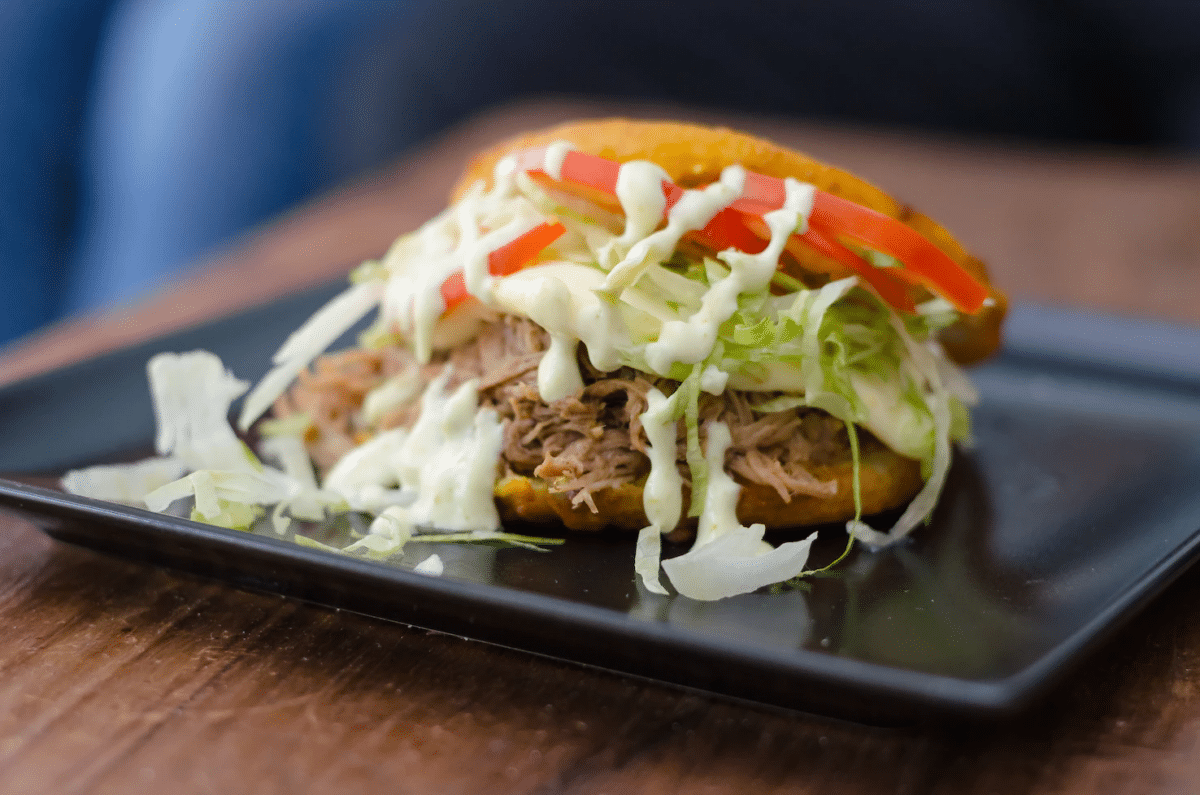
In Venezuela, the cuisine is known as comida criolla and features yams, yucca, plantains, rice, and beans. Popular dishes include
- Arepas (corn buns stuffed with savoury fillings)
- Pabellón criollo (shredded meat with beans and rice)
- Hallaca (corn dough filled with beef, pork, and olives)
- Cachapas (slightly sweet corn pancakes)
Venezuela also produces excellent rum and is a major importer of Scotch. Popular drinks include coffee, cocada (a milkshake made from coconut milk), merengadas (fruity milkshakes), papelón con limón (sugarcane juice flavored with lemon), and chicha de arroz (sweet and creamy rice-based drink).
Venezuelans have a sweet tooth, and desserts include huevos chimbos (egg yolk in sugar syrup), cachitos (stuffed croissants), bienmesabe (sponge cake soaked in coconut milk), and quesillo (a creamy pudding).
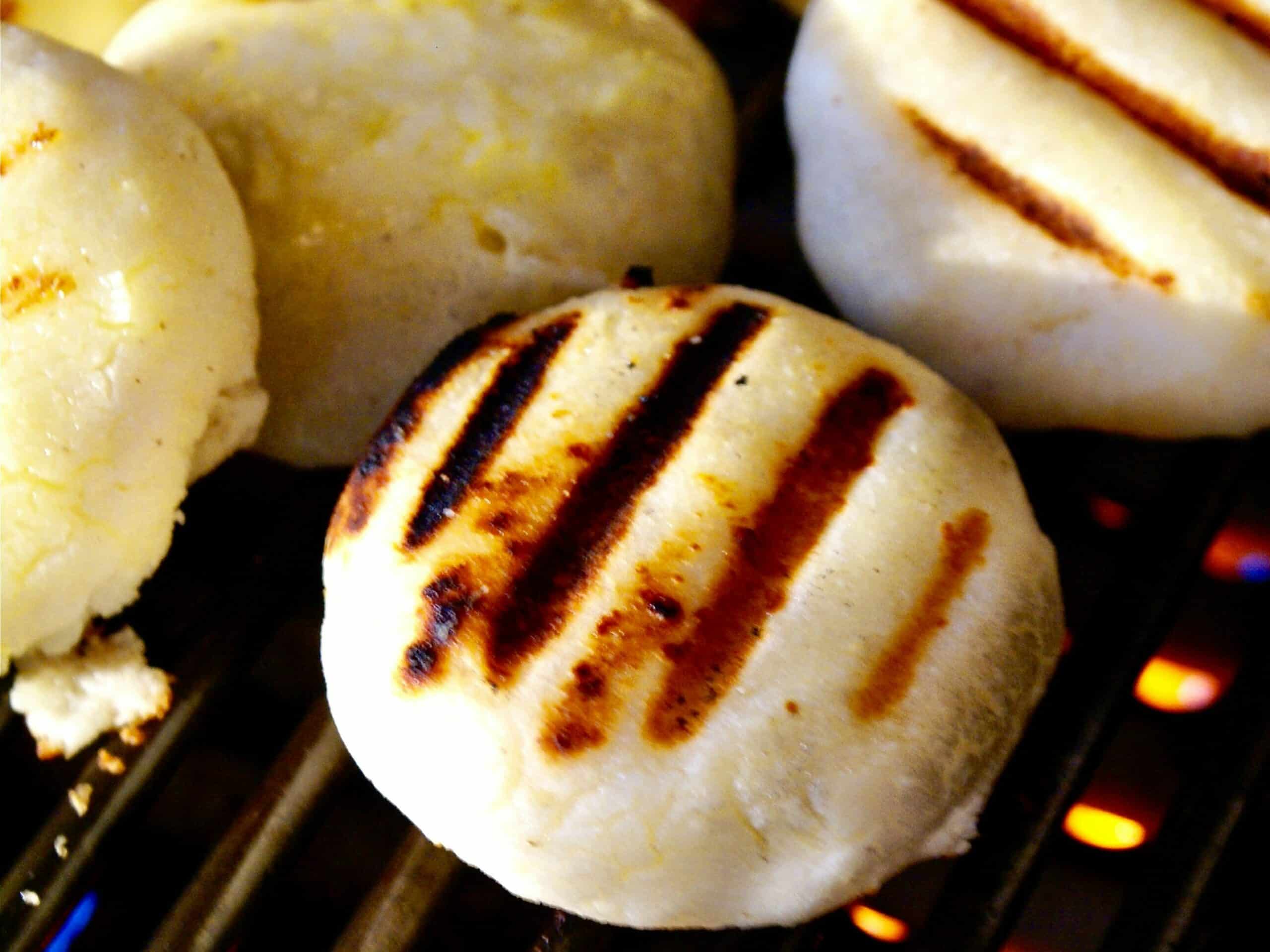
The two countries have a wide range of restaurants serving international cuisines, and both have a sweet tooth, with desserts and drinks made from tropical fruits. The drinking age in both countries is 18, and it is customary to leave a 10% tip in most restaurants.
Both countries also serve a variety of international cuisines, such as Italian, Chinese, Spanish, and Middle Eastern dishes. In both countries, desserts are very popular.
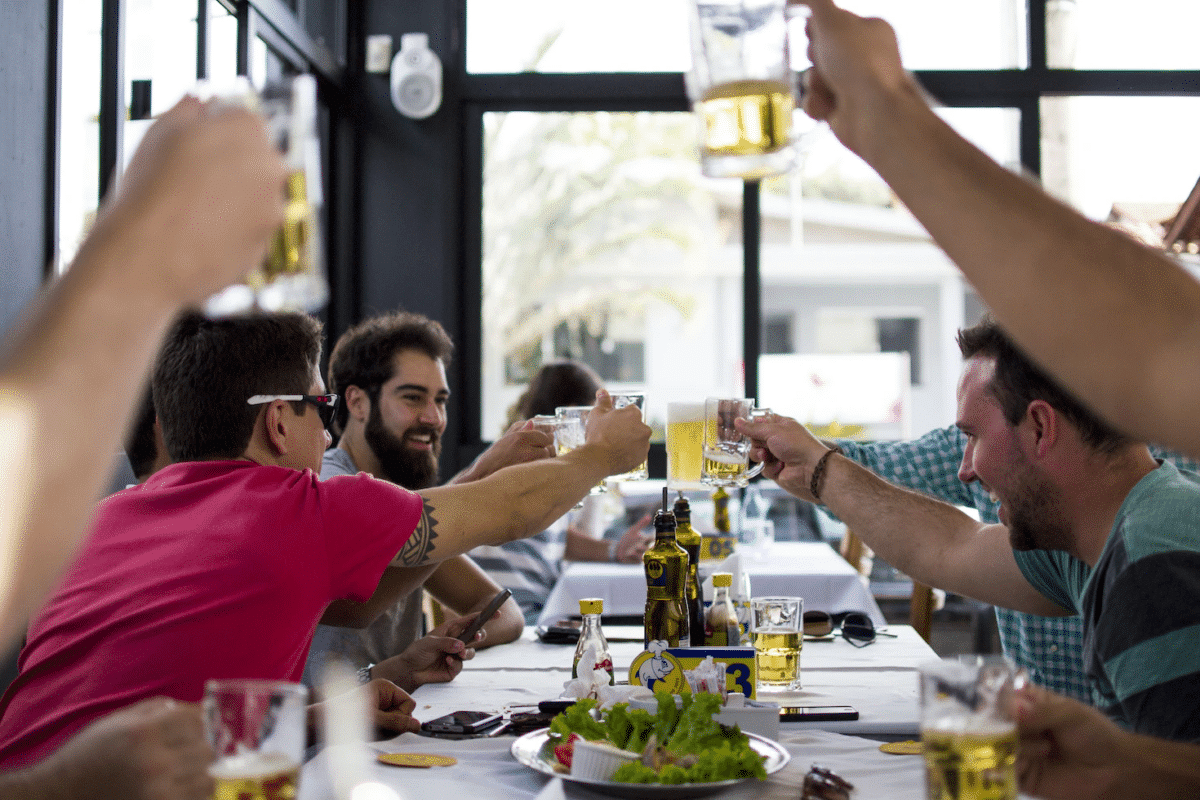
Summary
In conclusion, while there are some differences in the food and drinks of Brazil and Venezuela, there are also many similarities. Both countries have cuisines that are heavily influenced by their respective climates and cultures and make use of fresh meat and fish, root vegetables, and tropical fruits. Popular dishes in both countries include arepas, pabellón criollo, and hallaca, while popular drinks include coffee, cocada, and papelón con limón.
| Category | Brazil | Venezuela |
| Popular dishes | Feijoada, moqueca, pão de queijo, farofa, vatapá, bolinhos de bacalhau | Arepas, pabellón criollo, hallaca, cachapas, cachitos, bienmesabe, quesillo |
| National dish | Feijoada | Pabellón Criollo |
| Alcoholic beverages | Cachaça, wine, beer | Rum, Scotch |
| Popular non-alcoholic beverages | Coffee, cocada, merengadas, papelón con limón, chicha de arroz | Cocada, merengadas, papelón con limón, chicha de arroz |
| Typical ingredients | Fresh meat and fish, root vegetables, tropical fruits | Fresh meat and fish, yams, yucca, plantains, rice, and beans |
| Tip custom | ~ 10% | ~10% |
| Drinking age | 18 | 18 |
Beaches
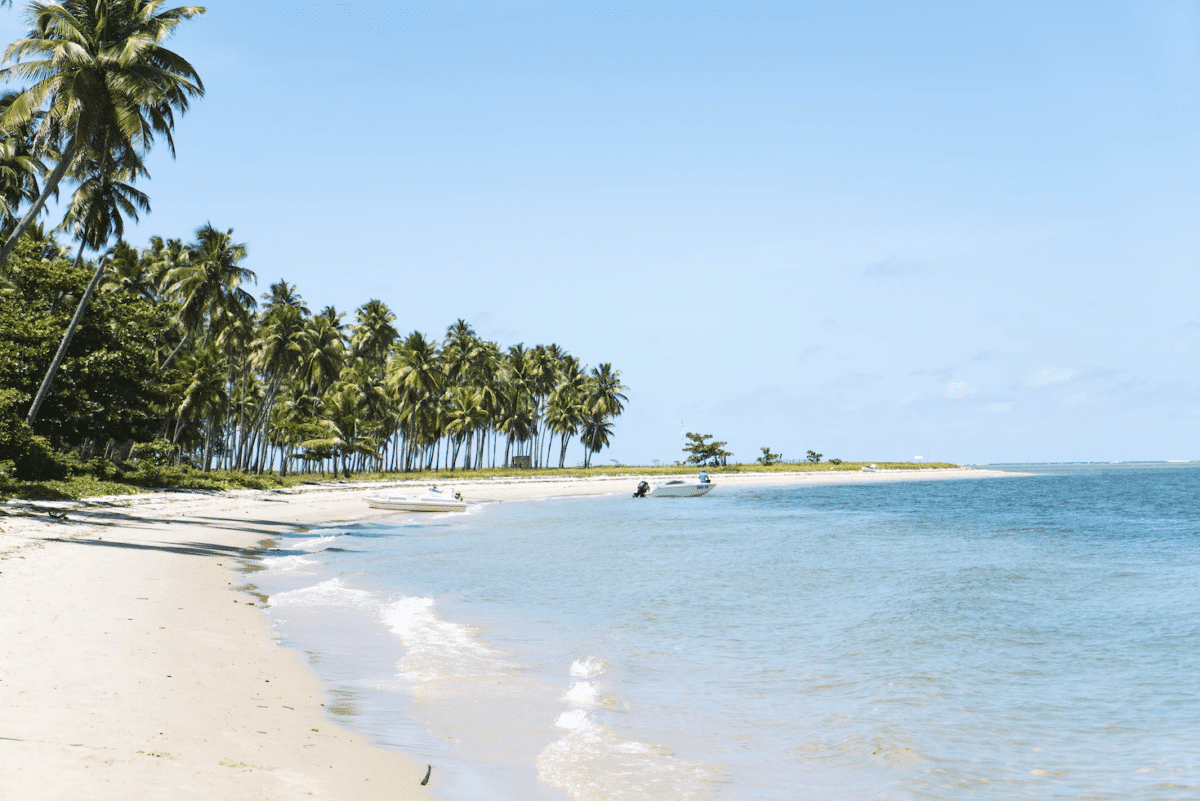
Now that we have looked at the beaches of both Brazil and Venezuela, let’s compare them. When it comes to beach destinations, Brazil and Venezuela offer a range of stunningly beautiful coastal locations. From the iconic Copacabana Beach in Rio de Janeiro to the secluded Cayo Sombrero on Margarita Island, these two countries are the ultimate beach destinations for those seeking sun, sand and fun.

Brazil is home to some of the world’s most famous beaches, including Copacabana, Ipanema and Leblon. These beaches offer a wide range of activities, from swimming and surfing to beach volleyball, kite surfing and stand-up paddleboarding. For those seeking a more secluded experience, there are also many hidden gems to discover, such as Trancoso, Praia do Espelho and Carneiros Beach.

Venezuela also has a wealth of beaches to explore. Madrisqui, for example, is located on the island of El Gran Roque and is famous for its powdery white sand. Cayo de Agua, located in Los Roques National Park, is a long, narrow stretch of white sand that offers a private, island-like experience. Mochima National Park, on the northeast coast, is a paradise of lush forests, hills and vegetation, and is particularly popular for snorkeling and diving. And of course, Playa El Yaque on the island of Margarita is a hotspot for water sports.
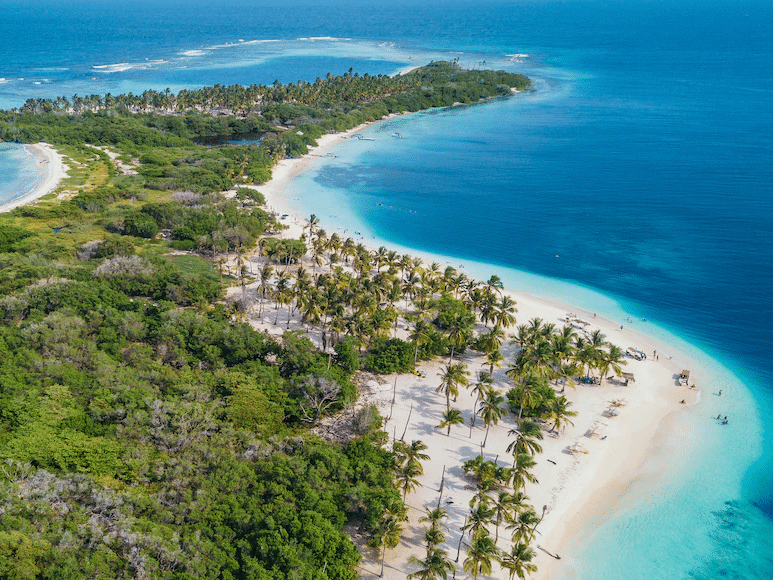
It’s hard to decide which country has more beaches. Both Brazil and Venezuela are blessed with stunning beaches and a wealth of activities to enjoy. Depending on the type of experience you’re looking for, one may be more suitable than the other.
Summary
For those seeking a bustling party atmosphere, Brazil’s Copacabana and Ipanema beaches are sure to deliver. But for those seeking a more secluded getaway, Venezuela’s Mochima National Park and Cayo Sombrero may be a better option. Ultimately, both countries offer a variety of stunning beaches and activities to explore, so it’s up to you to decide which is best.
Ultimately, which country is better and offers more beaches is really up to you. Whether you’re looking for a place to surf, sunbathe, explore nature, or just enjoy the scenery, both Brazil and Venezuela have incredible beaches with something for everyone.
If you’re looking for a beach vacation with a mix of culture and relaxation, then Brazil might be the perfect choice. If you’re looking for a getaway with plenty of natural beauty and wildlife, then Venezuela could be the perfect destination. Whichever you choose, you’re sure to have an amazing experience.
| Category | Brazil | Venezuela |
| Famous Beaches | Copacabana, Ipanema, Leblon, Trancoso, Praia do Espelho, Carneiros Beach | Madrisqui, Playa El Yaque |
| Secluded Beaches | Trancoso, Praia do Espelho, Carneiros Beach | Cayo Sombrero, Cayo de Agua |
| National Parks with Beaches | – | Mochima National Park, Los Roques National Park |
| Water Sports | Swimming, surfing, beach volleyball, kite surfing, stand-up paddleboarding | Water sports hotspot: Playa El Yaque |
| Overall Beach Experience | Brazil and Venezuela offer stunningly beautiful coastal locations with something for everyone, depending on the type of experience one is looking for. | It’s hard to decide which country has more beaches. Both Brazil and Venezuela are blessed with stunning beaches and a wealth of activities to enjoy. Ultimately, which country is better and offers more beaches is really up to personal preference. |
Transportation
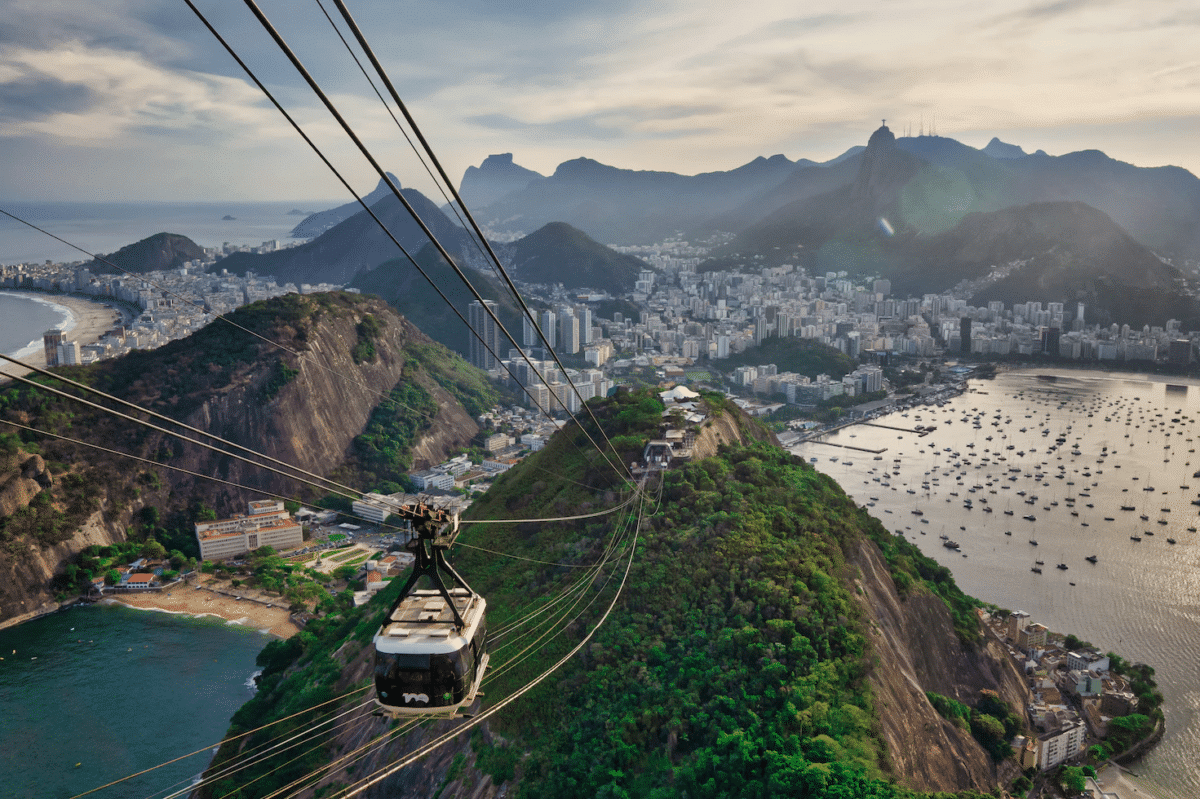
Traveling in Brazil and Venezuela can be an exciting and rewarding experience for tourists. Both countries have great transportation options to get around.
In Brazil, public transportation is generally by bus or plane. There are also a few passenger trains, though these are not very common. Car rental is possible but driving in Brazil can be dangerous due to aggressive driving practices and traffic rules that are routinely ignored. Hitchhiking is not recommended. Air travel is popular in Brazil and there are air services between all cities. Airport transfers are available between major centres. Most towns have an airstrip and larger cities have airports.
In Venezuela, air travel is the most common means of transportation with an excellent network of commuter airlines servicing the entire country. Bus travel is also popular and relatively inexpensive. Car rental is possible but not recommended due to aggressive driving and lack of safety on the roads. Organized tours are a reasonable option in Venezuela as the country is inhospitable to independent exploration.
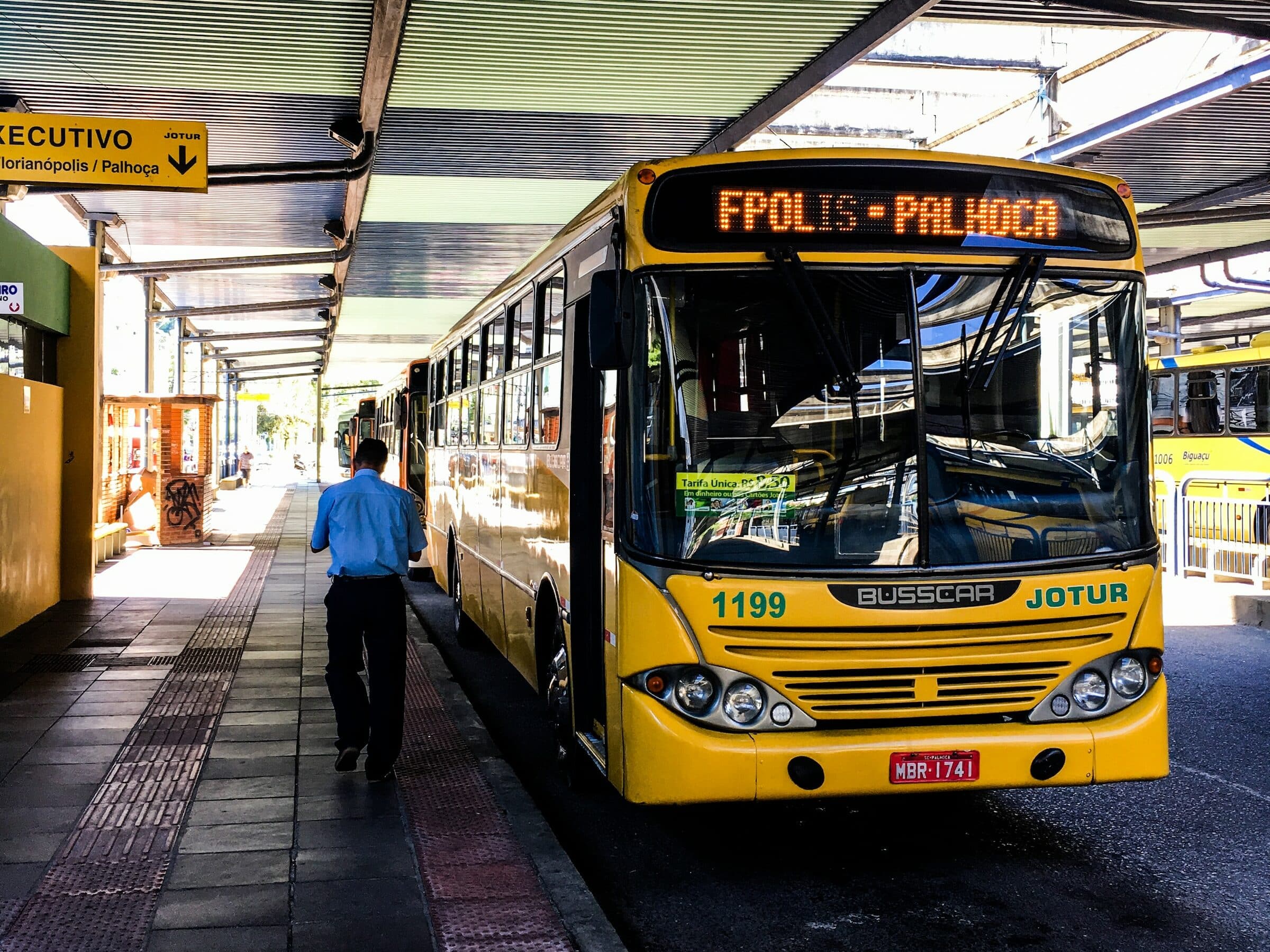
Both countries have extensive and economical bus services, with most cities having a central bus station. In Brazil, cars used for driving must have a spare tyre, wheel block, jack wrench and special reflector triangle. In Venezuela, drivers must be at least 18 years old to drive and 21 years old to rent a car. Speed limits are usually 80 to 120kph (50 to 75mph) on major roads and 40 to 60kph (25 to 37mph) in residential areas.
Conclusion Transportation: Brazil vs Venezuela
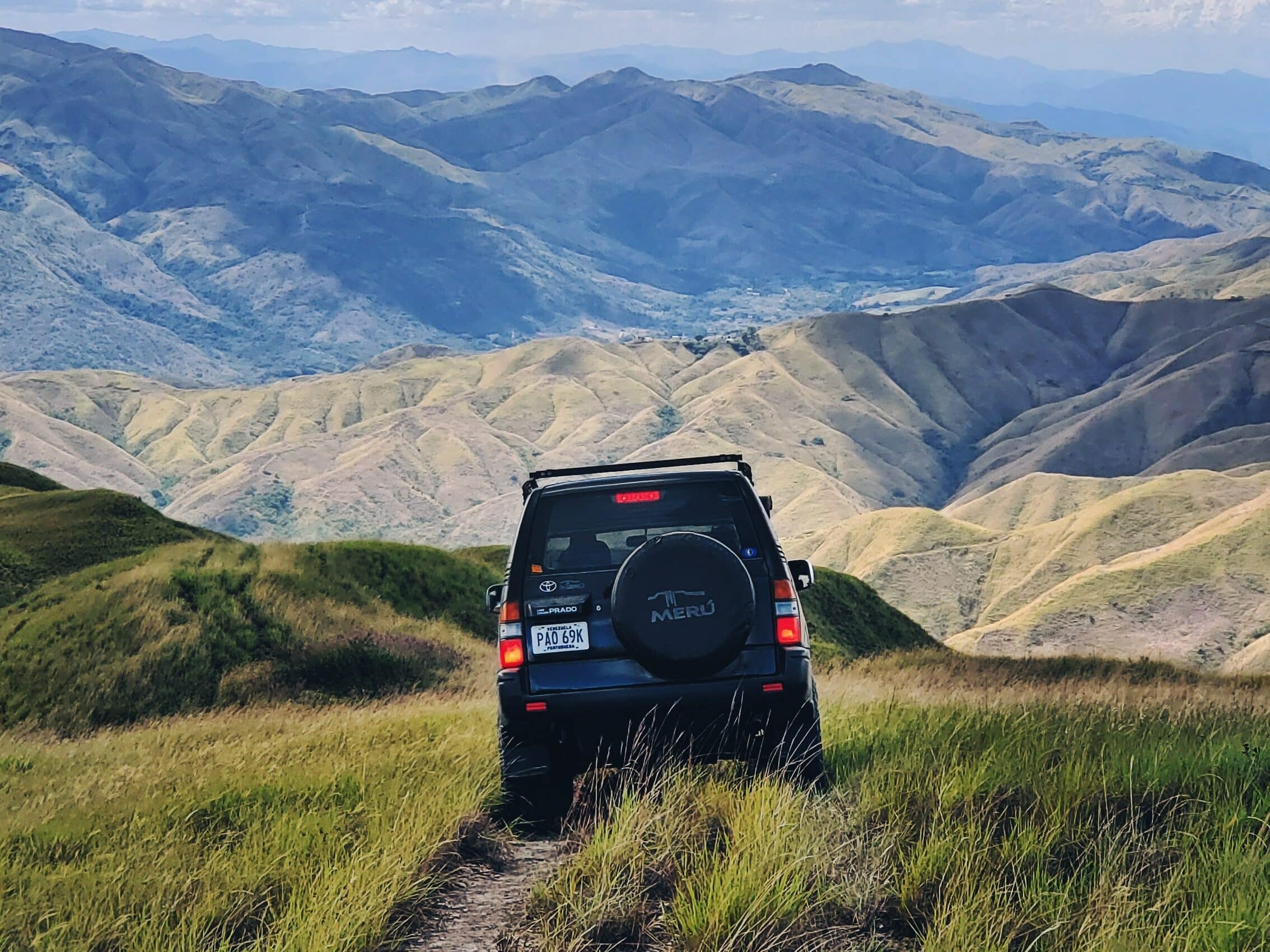
Overall, Brazil and Venezuela both offer great transportation options for tourists. Air travel is the most common form of transportation in both countries and is relatively safe and convenient. Buses are also popular and economical, though driving is not recommended due to the aggressive driving practices and lack of safety on the roads. Organized tours are a more reasonable option in Venezuela due to the inhospitable nature of the country.
| Category | Brazil | Venezuela |
| Primary means of transportation | Bus or plane | Also Bus and Air travel |
| Other means of transportation | Few passenger trains, car rental (not recommended) | Car rental (not recommended) |
| Driving safety | Dangerous due to aggressive driving practices and ignored traffic rules | Lack of safety on the roads |
| Organized tours | Not commonly needed | Reasonable option due to the inhospitable nature of the country |
| Speed limits | Major roads: 80 to 120kph (50 to 75mph), Residential areas: 40 to 60kph (25 to 37mph) | 80 to 120kph (50 to 75mph) on major roads, 40 to 60kph (25 to 37mph) in residential areas |
Travel Time

When it comes to planning a vacation, timing can be everything. Knowing the best time to visit a destination can make all the difference when it comes to experiencing the best of what the place has to offer. This is true for both Brazil and Venezuela, two countries that offer unique experiences to travelers.
Brazil’s large size offers a variety of climates, so it’s possible to enjoy a beach vacation year-round. For the best climate, it’s recommended to visit from December to March, when the greenery is lush and dense and the skies are sunny with little rainfall. A bathing holiday in Rio is possible all year round, but the Brazilian winter months of June to August are the most pleasant with an average temperature of 72°F and the least amount of rainfall. Heading south from Rio, however, the temperatures can get cooler in the winter months, so the remaining months may be better suited for a vacation.
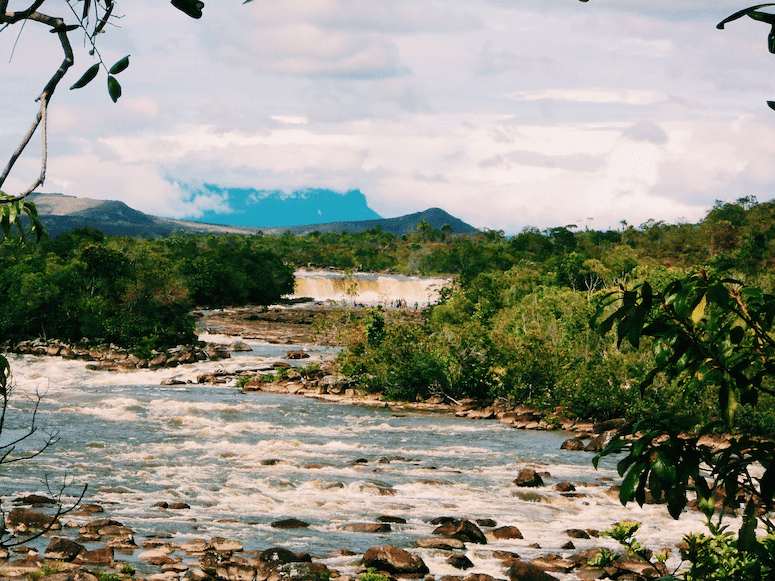
Venezuela’s best time to visit is during the dry season from December to April. During this time, there is the least amount of rainfall and warm, sunny weather, making it perfect for exploring the country’s nature. Additionally, Venezuela’s proximity to the Equator makes it a great place to visit year-round, with temperatures remaining relatively consistent throughout the year.
It’s best to avoid traveling to the lowlands during the wet season due to the heat and amount of rainfall. Isla de Margarita is a popular destination, especially during the dry season from December to April, when visitors can take advantage of the great temperatures and the immaculate white sandy beaches.
Summary Weather in Brazil vs Venezuela
Overall, Brazil and Venezuela offer travelers a unique experience. By timing your trip right, you can make the most of your vacation and enjoy the best of what these countries have to offer.
| Category | Brazil | Venezuela |
| Best time to visit | December to March for lush greenery and sunny skies, June to August for bathing holiday | Dry season from December to April, avoid lowlands during wet season |
| Climate | Variety of climates, beach vacation year-round, cooler temperatures in the south during winter months | Proximity to Equator, consistent temperatures throughout the year |
Weather and Climate
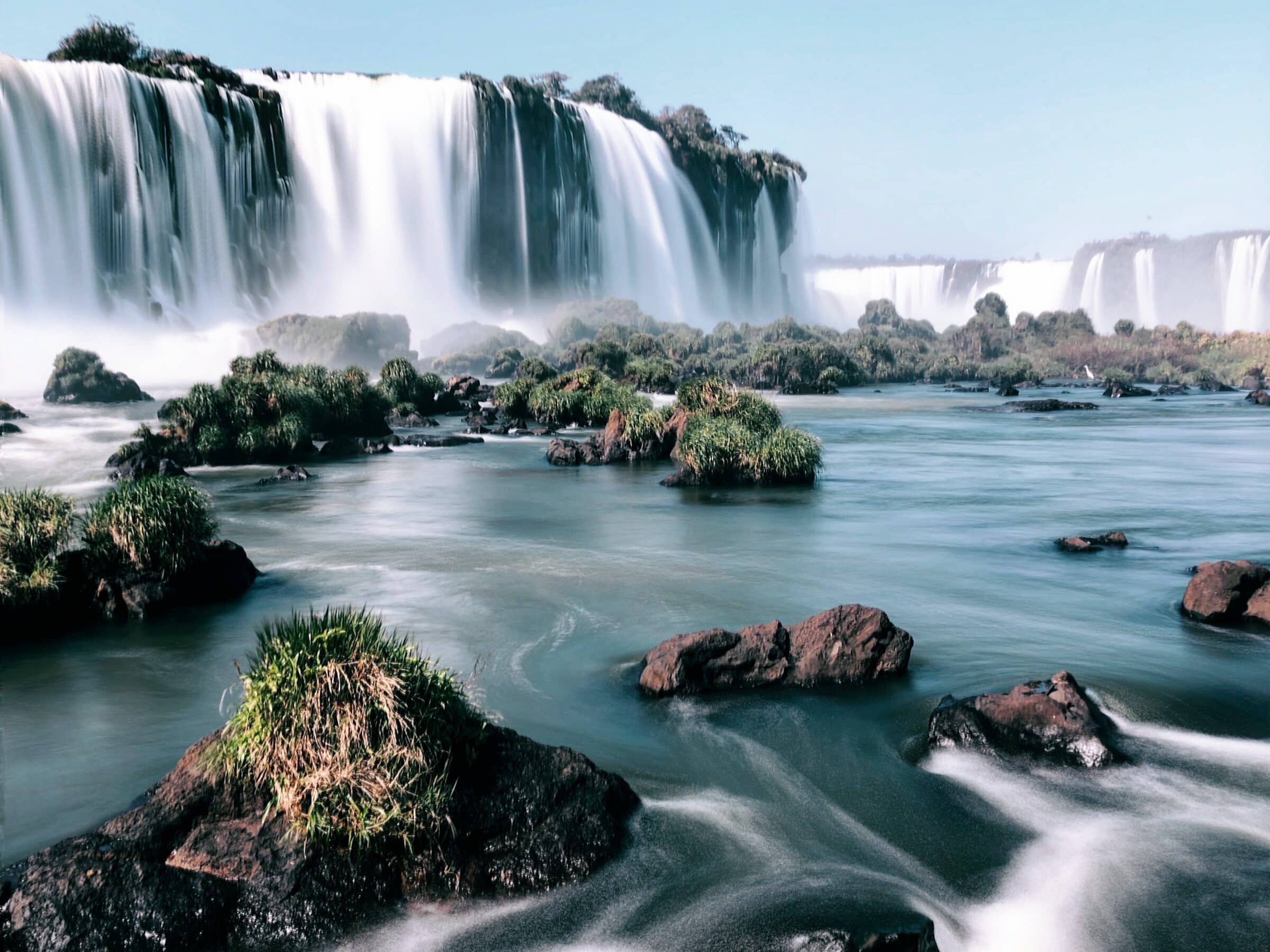
In comparison to each other, Brazil and Venezuela have quite similar climates, as both countries are located in the tropical/equatorial region of the world. Both countries experience warm temperatures year-round and have wet and dry seasons. However, there are some distinct differences between the two.
Brazil is much larger than Venezuela and thus has a more varied climate. The north and central parts of the country have an equatorial and tropical climate, with frequent rainfall and higher temperatures. The southern part of the country has a wetter subtropical climate with lower temperatures and lower rainfall. The north-east has a semi-arid climate with less than 700mm of rainfall per year. The weather in Brazil also varies significantly from region to region, depending on its proximity to the equator.
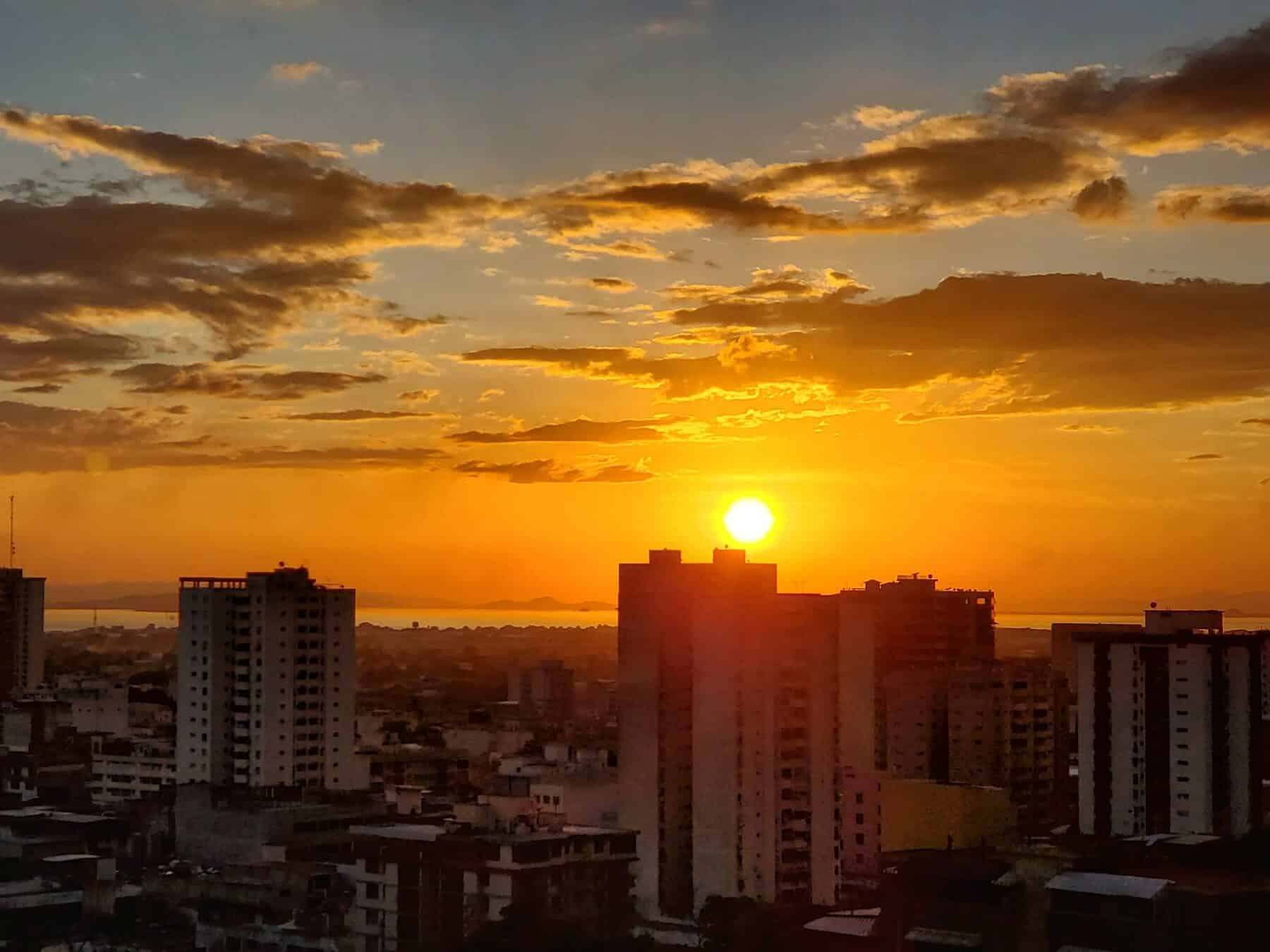
In contrast, Venezuela has a much more consistent climate throughout the country, with hot and humid tropical weather in most places. It is moderated slightly in the highlands, while Caracas has a tropical savanna climate. Venezuela also has much less variance in rainfall, ranging from 400 mm in the arid zones to 4,000 mm in the Venezuelan Amazon.
The best time to visit both countries is during the dry season, which runs from September to November in Brazil and from September to April in Venezuela. During this time, the weather is warm and dry with clear skies and pleasant temperatures.
Summary Climate: Brazil vs Venezuela
Overall, Brazil and Venezuela have quite similar climates, as both countries are in the tropical/equatorial region of the world. However, there are some important differences between the two, including Brazil’s varied climate and Venezuela’s more consistent climate with less variance in rainfall. The best time to visit both countries is during the dry season.
| Category | Brazil | Venezuela |
| Climate | Brazil has a more varied climate with equatorial, tropical, humid subtropical, and semi-arid climates, depending on the region. | Venezuela has a more consistent tropical climate with some moderation in the highlands and a tropical savanna climate in Caracas. |
| Rainfall | Brazil has more variance in rainfall, with some regions having frequent rainfall and others experiencing less than 700 mm of rainfall per year. | Venezuela has less variance in rainfall, ranging from 400 mm in the arid zones to 4,000 mm in the Venezuelan Amazon. |
| Best Time to Visit | September to November is the dry season in Brazil, and September to April is the dry season in Venezuela. During this time, the weather is warm and dry with clear skies and pleasant temperatures. | September to November is the dry season in Brazil, and September to April is the dry season in Venezuela. During this time, the weather is warm and dry with clear skies and pleasant temperatures. |
Accomodations

When it comes to accommodations, Brazil and Venezuela have much in common. Both countries offer a range of accommodation options that can meet any budget, from hostels and basic lodgings to luxury resort hotels. In both countries, you can find hotels, camping sites, hostels, eco-hotels, and posadas.
In Brazil, the hotel scene is largely restricted to the cities of the south, although Rio de Janeiro, São Paulo and Brasília have many modern hotels, ranging from the very expensive deluxe to budget options. For a more budget-friendly option, hostels are the most accessible option, offering rooms from private to 30+ mixed bed bunks. Meanwhile, camping is uncommon in Brazil, though some tour operators offer organised group trips in the Amazon and in the Pantanal regions. For a unique experience, eco-hotels are becoming increasingly popular, located mostly in or near the Amazonian rainforest.

In Venezuela, the hotel scene has hugely expanded over the past decade and hotels are easily found throughout the country in a wide range of prices. Camping is also possible in Venezuela, and plenty of tourist hot spots such as Gran Sabana, Henri Pittier national park, Isla Margarita and Santa Elena have dedicated campsites.
Hostels are found in Caracas, Valencia, Ciudad Bolivar, on the Caribbean islands of Margarita and Coche, in the mountain villages of Jají and San Rafael de Tabay, in the Orinoco river towns of Ciudad Bolívar and Puerto Ayacucho and on the coast at Coro. Posadas are also an appealing alternative to hotels, found in both urban and rural areas. Finally, campamentos and hatos are holiday compounds and big cattle ranches on the plains of Los Llanos that have been repurposed for ecotourism.
Conclusion Hotels: Brazil vs Venezuela
Overall, when it comes to accommodations, Brazil and Venezuela have a lot to offer travelers of all budgets. From luxurious hotels and eco-resorts to camping sites and hostels, there are plenty of options for a comfortable stay.

In Venezuela, Merida is the safest place to visit, while Brazil is home to many popular luxury hotels, such as design marvel Hotel Unique in São Paulo, the finely tuned Sofitel on Rio de Janeiro’s Copacabana beach front, and colonial Hotel Cataratas in Foz do Iguaçu. For a unique and more budget-friendly experience, both countries offer hostels, posadas, campamentos, and hatos. With so many great accommodation options, Brazil and Venezuela are worth considering for your next vacation.
| Category | Brazil | Venezuela |
| Accommodation Options | Hotels, hostels, eco-hotels, posadas, camping sites | Hotels, hostels, posadas, campamentos, hatos, camping sites |
| Hotel Scene | Largely restricted to southern cities, but Rio de Janeiro, São Paulo, and Brasília have many modern hotels | Hotel scene has hugely expanded over the past decade and hotels can be found throughout the country |
| Budget-friendly Options | Hostels | Hostels, camping sites, posadas |
| Unique Accommodation | Eco-hotels located in or near the Amazonian rainforest | Campamentos and hatos, holiday compounds and big cattle ranches on the plains of Los Llanos that have been repurposed for ecotourism |
| Popular Luxury Hotels | Hotel Unique in São Paulo, Sofitel on Rio de Janeiro’s Copacabana beach front, and Hotel Cataratas in Foz do Iguaçu | – |
| Safety Considerations | – | Merida is the safest place to visit |
Economy
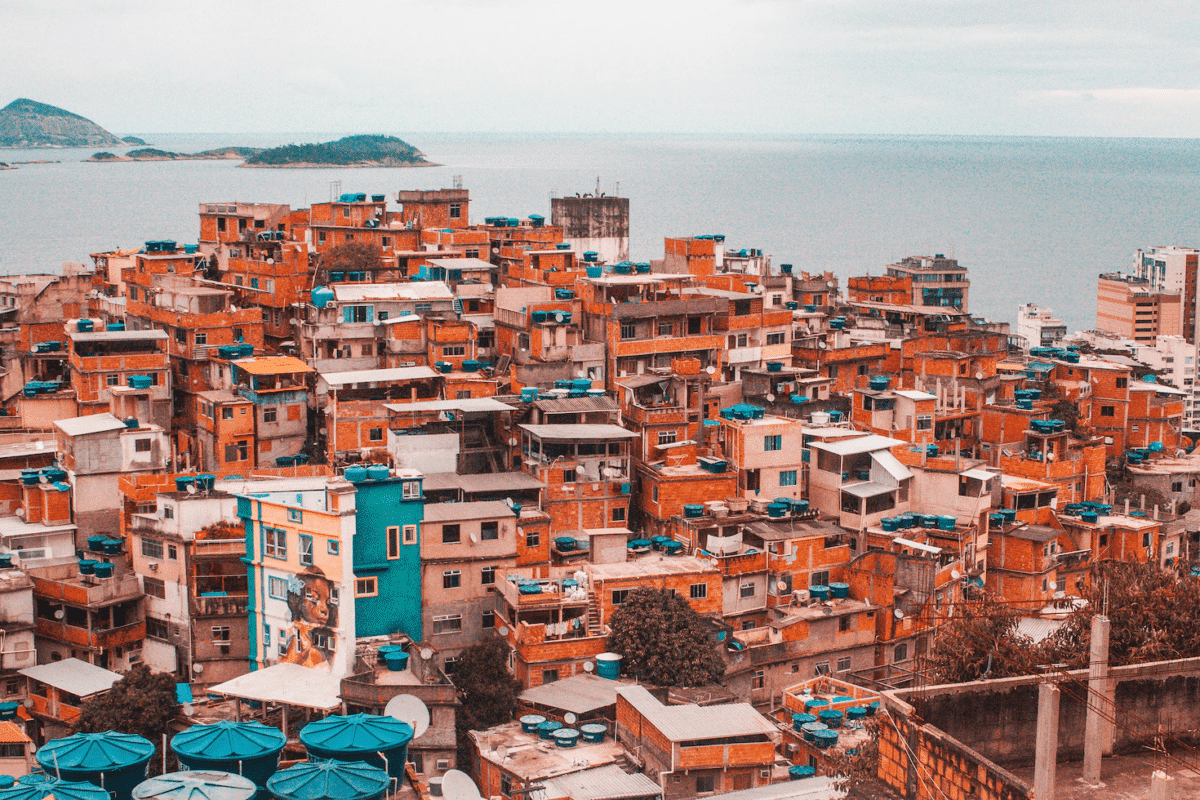
Brazil and Venezuela are two South American countries with very different economic situations. Brazil is a much larger country, with a population of over 200 million and the fifth largest economy in the world. Venezuela, on the other hand, has a population of just under 30 million and a much smaller economy.
Despite their size difference, both countries have some similarities in their economic situation. Both countries have a top individual income tax rate of 34 percent and a top corporate tax rate of 34 percent. They also have similar government spending, accounting for around 40 percent of total output in Brazil and 27 percent in Venezuela.

However, the two countries differ greatly in terms of economic growth. Brazil’s GDP has grown by 4.1 percent in the last year, while Venezuela’s has declined by 30 percent. Brazil’s GDP per capita is also over three times higher than Venezuela’s, at $14,916 compared to $5,178. On top of this, Brazil’s inflation rate is 3.2 percent, compared to Venezuela’s 2355.1 percent.

In terms of foreign direct investment, Brazil receives significantly more than Venezuela. In the last year, Brazil received $24.8 billion, while Venezuela only received $959 million. This is likely due to the higher levels of economic stability and growth in Brazil, which makes it more attractive to foreign investors.
Summary Economy: Brazil vs Venezuela
In summary, Brazil and Venezuela have some similarities in their economic situation, such as their tax rates and government spending. However, Brazil has a much larger and stronger economy, with higher levels of growth, GDP per capita, and foreign direct investment.
| Category | Brazil | Venezuela |
| Population | Over 200 million | Just under 30 million |
| GDP | 5th largest in the world | Smaller economy |
| Top individual income tax rate | 34% | 34% |
| Top corporate tax rate | 34% | 34% |
| Government spending | around 40% of total output | 27% of total output |
| GDP growth | 4.1% in the last year | declined by 30% in the last year |
| GDP per capita | $14,916 | $5,178 |
| Inflation rate | 3.2% | 2355.1% |
| Foreign direct investment | $24.8 billion in the last year | $959 million in the last year |
In conclusion: Brazil vs Venezuela
In summary, both Brazil and Venezuela offer a range of attractions that appeal to a wide variety of travelers. Brazil is renowned for its natural beauty, with its lush Amazon rainforest, iconic Christ the Redeemer statue and stunning Iguazu Falls, while Venezuela boasts snow-capped Andean peaks, white-sand Caribbean beaches and the world’s highest waterfall, Angel Falls.
For beach lovers, Brazil’s Copacabana and Ipanema beaches are popular destinations, while Venezuela’s white-sand Caribbean beaches offer a more secluded and unspoilt getaway.
In terms of travel time and transport, Brazil has a more extensive travel network, with several international airports and a well-connected bus system, making it easier to travel around the country. Venezuela, on the other hand, has fewer international airports, and traveling around the country can be challenging due to limited infrastructure.
Food and drink in both countries is abundant, with Brazil’s churrasco, feijoada and caipirinha cocktails being some of the country’s most famous offerings, while Venezuela is known for its arepas, empanadas and fresh fruit juices.
Accommodation in both countries ranges from budget hostels to luxury resorts, with Brazil offering more options to suit all budgets. Economically, Brazil is a more developed country with a larger tourism industry, while Venezuela’s tourism industry has been affected by political and economic challenges.
All in all, both Brazil and Venezuela are unique and fascinating countries to visit. They offer different experiences that are sure to leave a lasting impression on any traveller.
Article: Brazil vs Venezuela! You can find more South American articles here: South American blog or looking for a comparison of Tijuana vs Mexico City?
- 10 Best Places to Visit in Toronto - October 21, 2024
- Sustainable Tourism in Africa: Embracing Green Industrialization - August 22, 2024
- National Parks in Montana: A Traveler’s Paradise - August 20, 2024
